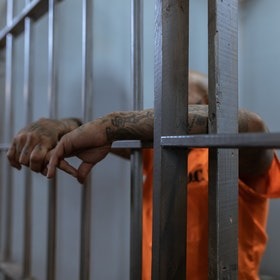Radicalization in Prisons: An Emerging Challenge in the Fight Against Radicalization into Violent Extremism in Kenya
Ruwaida Bana
July 1, 2022
Radicalization into violent extremism within the prison system has exponentially increased globally, making it a much-debated topic in recent times. In June 2022, the Cabinet Secretary for the Ministry of Interior and Coordination of the National Government in Kenya, Dr. Fred Matiang’i, acknowledged that there was an increase in religious radicalization in Kenyan prisons. This trend presents security agencies and policymakers with new challenges to the safety of prisons in the country.
In Kenya, as is the case elsewhere in the world, correctional facilities such as prisons are set up to isolate wayward individuals who commit various types of crimes by rehabilitating them in enclosed spaces where they are reformed to reduce recidivism, whilst at the same time, protecting the society from harm. However, in Kenya, the current structure of prisons dates back to the post-independence period and has not been redesigned to accommodate emerging forms of criminalities such as violent extremist offenders. This has made it easier for prisoners to mingle and join various groups. It is imperative to note that some of the prisoners have a background of violence and threatening behavior. Add that to the overcrowding and poor living conditions in prisons – a mix of facilitating factors that push inmates into violent extremist groups. Several reports and research papers have also supported the assertion that prisons are becoming the new breeding grounds for violent extremists.
But how exactly does radicalization take place in these spaces? Often, new inmates become vulnerable when they enter the prison system making them susceptible to indoctrination by various groups. There are two key push and pull factors: first, push factors such as perceived marginalization, lack of freedom, and poor living conditions leave these prisoners with limited options and thus find themselves entertaining radical thoughts. Second, terrorist recruiters, who are part of larger networks of organized crime groups, are always seeking ways of growing their networks by attracting new membership. These recruiters are adept at spotting vulnerable inmates and luring them into their networks through overt and covert tactics. In addition, these recruiters exploit the hatred and frustrations of inmates inside the prison by driving them towards a shared ideological commitment to violence.
The Kenya Prisons Service has acknowledged the need to rehabilitate and reform offenders especially the youth in Borstal institutions and Youth Correctional Training Centre (YCTC). Indeed, a parallel program known as Disengagement, Deradicalization, Rehabilitation and Reintegration (DDRR) has already been rolled out and it is responding to this emerging issue. However, for DDRR policy to be effective in the longer-term, attention needs to be given to the various types of inmates; terrorists serving jail terms, terror suspects in remand, and those who have not gone to prison but had been offered amnesty. Other parameters should also be sensitive to gender, cultures, religious sensitivities, as well as the environment. The need for disengagement and rehabilitation for terrorists and violent extremists is particularly essential as compared to crime-committing individuals.
In addition to reviewing the DDRR program, it is important for all prison staff to receive expert training on how to not only handle terrorist inmates but also how to manage those who are vulnerable to radicalization within this space. Training staff on diversity awareness which could entail appreciating the varied cultural and religious backgrounds of prisoners to distinguish between behaviors and practices potentially linked to radicalization would greatly contribute towards the deradicalization process as well as act as a deterrence against radicalization. Staff should also be trained to understand radicalization as a process, as well as the individual, social and environmental factors behind prisoners’ behavior. Staff must recognize the process, not just be on the lookout for ‘signs’. Specially trained staff composed of psychologists, social workers, art/culture, therapists, and faith leaders should also be appointed to give additional expert advice on disengagement intervention programs.
Therefore, there is no doubt that preventing and countering terrorism and violent extremism in Kenya increasingly demands dedication, specialization, and a great deal of attention as the nature of the threat evolves. Indeed, acknowledging that radicalization and recruitment into terrorist organizations is taking place within prisons is the first crucial step towards finding a long-lasting solution to this menace. Prison structures have remained unchanged even as various types of inmates including those who have committed grave offences such as violent extremism are incarcerated without an appropriate reform program. This has allowed prisoners to be incubators of violent extremist ideologies, a dangerous trend and a blow to PCVE efforts. Consequently, prioritizing, reforming, and adequately resourcing programs such as DDRR as well as training staff on various nuances related to prisoners with terrorism offences would be a huge step towards securing gains made in the the PCVE space outside the prisons.
Ruwaida is a Programs Officer at BRAVE (Building Resilience Against Violent Extremism)

